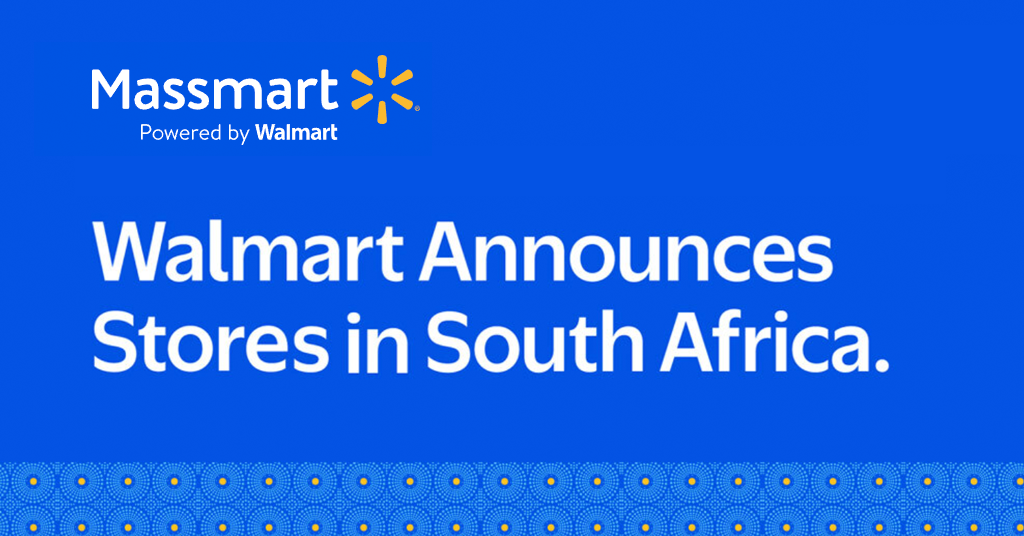In early September 2025, Walmart announced that it will open its first branded stores in South Africa later in the year. These stores will offer a full range of goods — fresh groceries, household essentials, apparel, technology — and will include locally sourced products. The retail giant’s aim is to bring its “Every Day Low Prices” model and global standards to South Africa, while also celebrating local culture.
These new Walmart-stores will complement Massmart, the South African retail and wholesale group which Walmart already owns. The stores are expected to open before year-end 2025, with many sites already under development.
What Is Massmart — and Walmart’s Ownership
To understand Walmart’s move, it helps to know what Massmart is and how the ownership has evolved:
- Massmart Holdings Limited is a major South African group with retail formats like Game, Makro, Builders Warehouse, Cash & Carry etc. It operates both within South Africa and in other sub-Saharan African countries.
- Walmart began acquiring a majority stake in Massmart back in 2011, and in 2022 completed a transaction to buy out the remaining non-controlling shares. As of late 2022, Massmart is a wholly owned subsidiary of Walmart.
So to conclude, Massmart is now fully owned by Walmart, but it continues to operate its existing brands and stores. The new announcement is that Walmart is entering South Africa under its own Walmart-branded stores (in addition to Massmart’s stores).
eCommerce Trends in South Africa: Opportunities & Challenges
The South African market is already well advanced in many respects in terms of ecommerce. Here are some key trends & statistics:
| Metric | Value / Trend | Notes |
|---|---|---|
| Internet users & penetration (2024-2025) | Around 45-51 million users; ~74.7-78.9% of population online. | The increasing adoption shows growing opportunity for online and omnichannel retail. |
| Mobile connections | ~124 million cellular connections; often more than one per person. | Mobile is dominant for access; digital payments etc follow that trend. |
| eCommerce growth & behavior | 10.4 million people made online purchases in 2024; a significant share use mobile devices for shopping. Free delivery, discounts/loyalty are important drivers. | Nigerian, rural, township etc segments are less penetrated but growing. |
Challenges:
- Last-mile logistics remain difficult: bad roads in rural and peri-urban zones, distance, cost, security issues (e.g. hijackings of delivery trucks) all add cost and complexity.
- Infrastructure: While mobile internet is widespread, fixed broadband/home wifi is less so. There are many households online only via mobile, and some areas still underserved.
- Digital divide: While about 3-5 million new internet users come online each year, perhaps ~20-25% of the population still lacks reliable connection.
The Case for Drone Delivery: A Possible Solution
Given the logistics challenges, drones (or UAVs) are increasingly discussed as part of the solution, especially for:
- Bad roads / difficult terrain: Where road infrastructure is poor or unreliable, drones can cut delivery times. Remote or rural communities might benefit especially.
- Last-mile delivery problems: If ground vehicles are slow, costly, or unsafe, drones may help bypass some of these constraints.
Some factors to consider:
- Regulation & airspace safety: South Africa has regulations for UAVs/drones, but commercial delivery is still nascent. Permissions, safety, weather, batteries etc are real challenges.
- Payload & cost constraints: Drones are better for small/light parcels. Heavy or large packages still require traditional transport.
- Mixed logistics models: Likely mixture of ground, drone and pickup points / lockers will work best, especially in areas where full home delivery is hard.
While there isn’t any confirmed large-scale drone delivery operations in South Africa tied to Massmart or Walmart yet, the logic is clear: as Walmart/Massmart expand their omni-channel capabilities, they may consider experimenting with drones, especially for remote or underserved areas.
What This Means, Going Forward
Here are some thoughts on Walmart’s move:
- Increased competition — Local retailers (Shoprite, Pick n Pay, Woolworths), plus online giants (Takealot, Amazon, etc.) will face competition not just from Massmart but also from new Walmart-branded stores. Pricing, supply chain efficiency, customer experience will matter even more.
- Growth in online and omnichannel — With high internet penetration and mobile usage, the consumers are ready for store and online hybrid models. Walmart/Massmart likely will combine physical stores and strong digital offerings (apps, delivery, pickup etc.). The announcement mentions “digital capabilities to enhance their shopping journey.”
- Supply chain localisation — A continued push to source locally, support small/medium suppliers. Walmart’s “Growth Summit” signals that Massmart is working to bring more African-based suppliers into their assortment.
- Potential innovation in delivery models — To deal with infrastructure constraints, security, cost, we may see more creative logistics: pickup points, township parcel lockers, drones, or hybrid systems. Walmart globally has experimented in these areas, and Massmart/Walmart South Africa may follow this pattern.
Walmart’s decision to open its own flagship stores in South Africa (distinct from Massmart’s formats) is a signal that the company believes the market is ripe. Thanks to relatively high internet adoption, growing ecommerce behaviour, and local supplier capacity, the pieces are in place.
But infrastructure and logistics remain big hurdles — and drone delivery, while not yet mainstream locally, may become part of the toolbox, especially in more challenging geographies.
If Walmart/Massmart can successfully combine competitive pricing, good store experience, strong online/delivery capability and manage the logistic challenges, they could change the South African retail landscape significantly.
